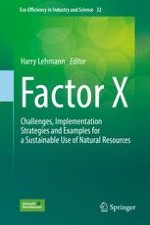2018 | OriginalPaper | Chapter
21. An Approach to Identify Resource Patterns on a Neighborhood Level
Authors : Magnus Österbring, Leonardo Rosado, Holger Wallbaum, Paul Gontia
Published in: Factor X
Publisher: Springer International Publishing
Activate our intelligent search to find suitable subject content or patents.
Select sections of text to find matching patents with Artificial Intelligence. powered by
Select sections of text to find additional relevant content using AI-assisted search. powered by
